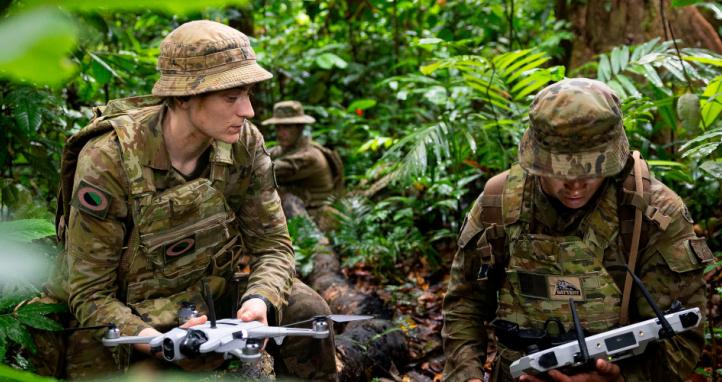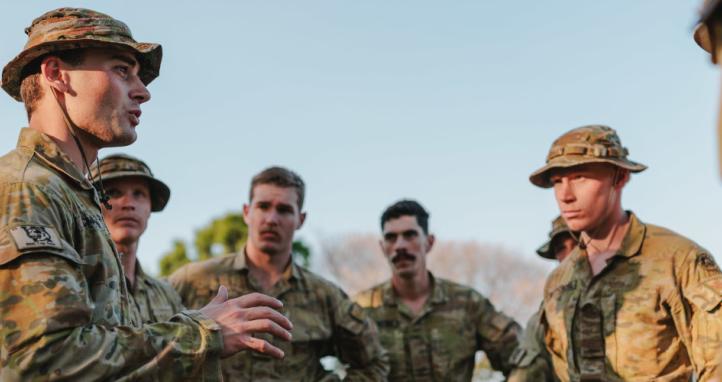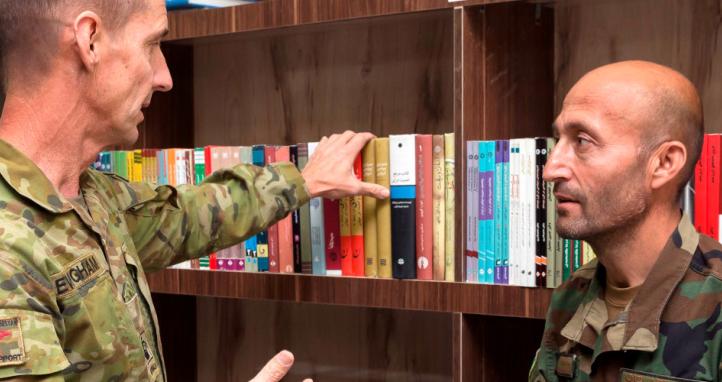Australians have always found strength in innovation born of necessity. Over generations of war, those who have excelled in the ability to improvise, innovate, and adapt at the grassroots level have shaped the battlefield. In 2025, this remains the case. In a battlespace that blends age-old trench warfare with AI-driven robotic platforms, there is a very real need to innovate in order to survive.
As warfare evolves, the Australian Army requires its soldiers to lead the development of both strategy and technology, ensuring that the legacy of ‘Aussie ingenuity’ continues to provide a strategic advantage in any contested environment. Although I have no affiliation with MakerSpace, its role as a sponsored program stands as a vital enabler in this pursuit. By providing access to tools, training, and a culture of hands-on experimentation, it empowers soldiers to turn ideas into practical capabilities. Its role is not to replace established programs, but to complement them.
Transforming Battlefields throughout history
The legacy of Australian battlefield ingenuity is renowned throughout recent history. Repeatedly, Australian soldiers have created or improvised equipment to achieve enhanced survivability or lethality. From the makeshift periscopic rifles at Gallipoli to the production of, and customisation of, Electronic Counter Measures (ECM) for use in Iraq and Afghanistan, the development of solutions to problems is what Australians do best.
The pace of innovation is relentless
Around the world, the pace of innovation is relentless. Soldiers are turning necessity into opportunity, innovating at speed to gain the advantage of the day.
Ukraine’s ‘Operation Spiders Web’ demonstrated the devastating impact that coordinated drone swarms can have, disabling over 40 Russian aircraft and causing damage to airfields in synchronised strikes. In the Middle East, Iran has used swarming drones in conjunction with missile attacks in an attempt to saturate Israel’s Iron Dome defence. In China, the Jiutian SS-UAV “Mothership” program aims to redefine aerial warfare by utilising long-range deployable micro Uncrewed Aerial Vehicles (UAVs) guided by AI to conduct ISR, electronic warfare, and autonomous swarming attacks.
Is Australia keeping up?
Following in the footsteps of the U.S. Air Force’s XQ-58A Valkyrie and the DARPA Gremlins Program, Australia has begun its shift toward operating in a future combat environment. With Macro developments in the air to support the F-35 and E-7A Wedgetail, the MQ-28A Ghost Bat program – also known as the ‘Loyal Wingman’ – marks a significant step for the Australian Defence Force (ADF) in employing collaborative autonomous systems that utilise UAVs.
For ground units, successful experimentation has been conducted using technology that includes the ‘Hunter Wolf’ uncrewed ground vehicles (able to extend their operations ahead of a battlegroup without resupply) and the Defendtex Drone 40, which is capable of both ISR and attack taskings. The modified use of off-the-shelf UAVs such as the Phantom 4, has also been ‘tinkered’ with for many years, tapping into that ‘Digger ingenuity’ previously discussed.
With recent demonstrations of UAV capability on Exercise Talisman Sabre 2025 (which included applications in ISR, Frontline Casualty Trauma Care, and munitions delivery), Australia’s approach must continue to work towards leading the global standard to counter emerging threats.
Innovation on the run
What were once distant possibilities for battlefield communication, munitions, software, hardware, coordination and control are now the realities that shape conflicts around the world. Each Area of Operation demands a highly adaptive capable force that does not rely simply on achieving battlefield dominance through firepower alone. It requires a force capable of ‘innovation on the run’ and the ability to adapt its tactics to emerging technology whilst on the front line, at minimal cost, with what is available. A soldier-led innovation approach will ensure real-time threats have real-time solutions, without the need to rely on lengthy product development.
Creating the challenge for Soldier-Led innovation
The challenge of innovation does not lie in coming up with the idea. The challenge lies in creating a toolbox that allows a soldier to drive their creation from conception to construction. In previous years, MakerSpace has provided a collaborative workshop environment on bases around Australia where soldiers could take a learn-by-making approach, experimenting with tools, technology, and design in an innovative educational approach. Building on that foundation, the upcoming ‘Rise of the Machines’ initiative will take things further, offering a hands-on competition that immerses soldiers in the design, programming, and deployment of ground-based robotics and autonomous platforms. The challenge is clear: Design – Build – Fight!
The Path Forward
Great challenges face the current and future generation of warfighters. Creative innovation must be employed with urgency and be embraced without resistance to constant change. Creativity and determination to deliver the ability to evolve the battlespace to maintain dominance consistently will ensure that Australia sets the standard to which excellence is measured. By fostering the next generation of warfare entrepreneurs, the ADF will ensure the legacy of Australian battlefield ingenuity continues.
Rise of the Machines:
06 Oct - 21 Nov Robertson Bks (Darwin)
06 Oct - 21 Nov Lavarack Bks (Townsville)
06 Oct - 21 Nov Borneo Bks (Toowoomba)
06 Oct - 21 Nov Gallipoli Bks (Brisbane)
06 Oct - 21 Nov Latchford Bks (Albury/Wodonga)
06 Oct - 21 Nov Holsworthy Bks (Sydney)
06 Oct - 21 Nov Simpson Bks (Melbourne)
06 Oct - 21 Nov Edinburgh Defence Precinct (Adelaide)
06 Oct - 21 Nov Irwin Bks, (Perth)
References
Allison, C., & wires. (2025, June 4). Images reveal aircraft lost in Ukraine's 'Spider's Web' attack on Russia. ABC News. https://www.abc.net.au/news/2025-06-04/satellite-imagery-sheds-light-ukraine-drone-attack-russia/105374778
Defence Connect. (2024, August 6). Australia still interested in MQ-28A Ghost Bat strike capability, says Conroy (R. Dougherty, Author). https://www.defenceconnect.com.au/air/14519-australia-still-interested-in-mq-28a-ghost-bat-strike-capability-says-conroy
Defense Express. (2025, June 24). What is Giant Jiutian SS-UAV Queen Drone, which China wants to put into service. https://en.defence-ua.com/weapon_and_tech/what_is_giant_jiutian_ss_uav_queen_drone_which_china_wants_to_put_into_service-14565.html
DeWeese, C. (2025, June 20). Chinese drone show sets Guinness World Record. Weather.com.https://weather.com/news/news/2025-06-18-drone-show-guinness-world-record
DARPA. (n.d.). Gremlins. Defense Advanced Research Projects Agency. https://www.darpa.mil/research/programs/gremlins
Hall, C. (2025). Development of an Infantry ‘Disrupt Force’ and Technological Experimentation in an Operational Unit (Occasional Paper). Australian Army Research Centre. Development of an Infantry ‘Disrupt Force’ and Technological Experimentation in an Operational Unit | Australian Army Research Centre (AARC)
Hambling, D. (2021, June 17). DARPA Gremlin swarm will carry weapons or sub-drones and re-arm mid-air. Forbes. https://www.forbes.com/sites/davidhambling/2021/06/17/darpa-gremlin-swarm-drones-to-carry-weapon-and-re-arm-mid-air/
Insinna, V. (2021, November 5). A mothership finally recovers DARPA’s ‘Gremlins’ drone, but it’s not all good news. Breaking Defense. https://breakingdefense.com/2021/11/a-mothership-finally-recovers-darpas-gremlins-drone-but-its-not-all-good-news/
Trevithick, J. (2025, June). MQ-28 Ghost Bats controlled from E-7 Wedgetail in Loyal Wingman test. The War Zone. https://www.twz.com/air/mq-28-ghost-bats-controlled-from-e-7-wedgetail-in-loyal-wingman-test
The Asia Live News Service. (2025, May 21). China’s SS-UAV: Rise of flying drone carrier and future of airborne warfare. https://theasialive.com/chinas-ss-uav-rise-of-flying-drone-carrier-and-future-of-airborne-warfare/2025/05/21/
Testbook. (n.d.). Stratosphere: Know its meaning, characteristics and importance. https://testbook.com/physics/stratosphere
Flemming, T., & wires. (2025, June 2). What we know about Ukraine's 'Spider's Web' drone attack on Russia's air bases. ABC News. https://www.abc.net.au/news/2025-06-02/ukraine-drone-attack-on-russian-air-bases-explained/105364708









